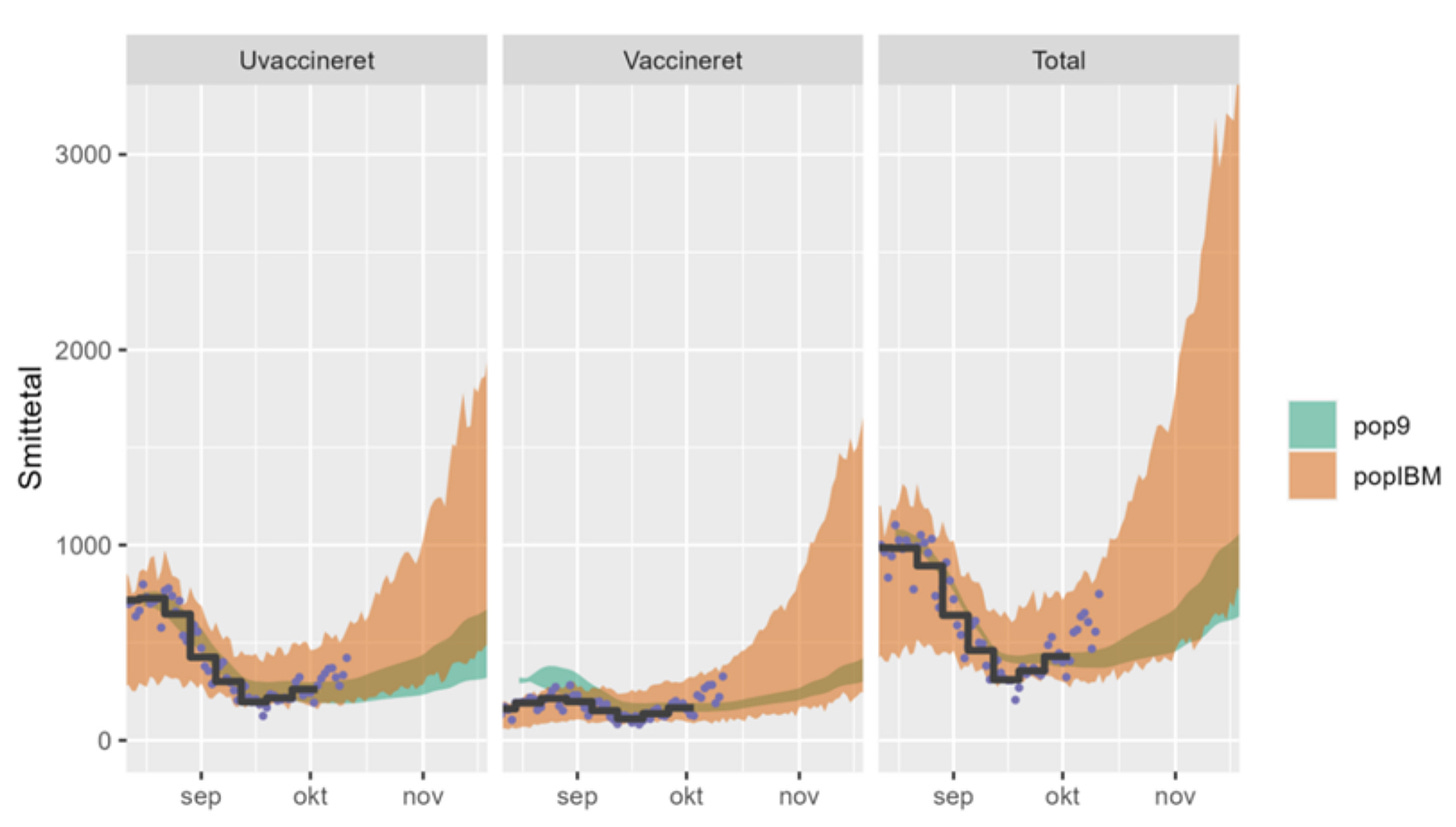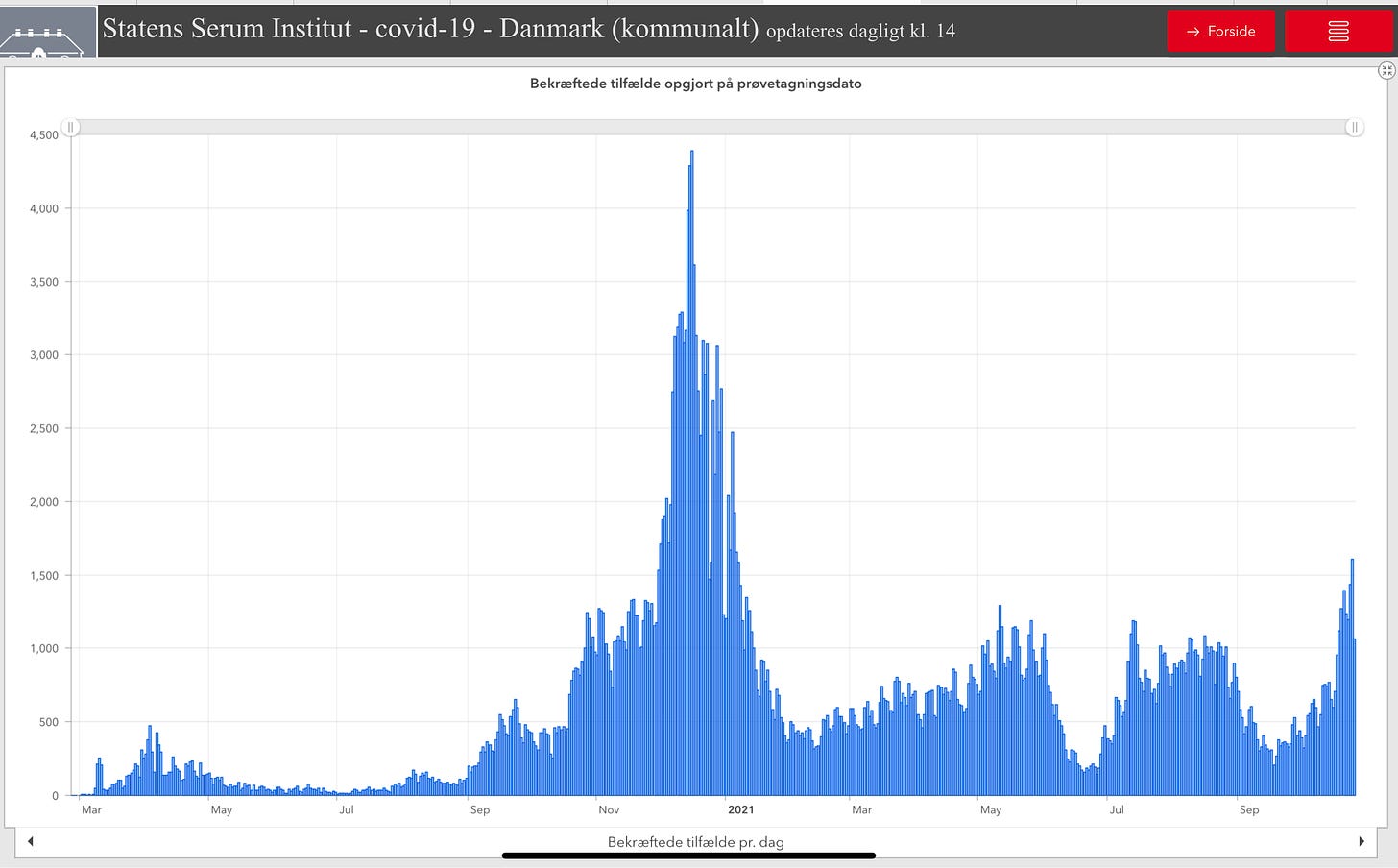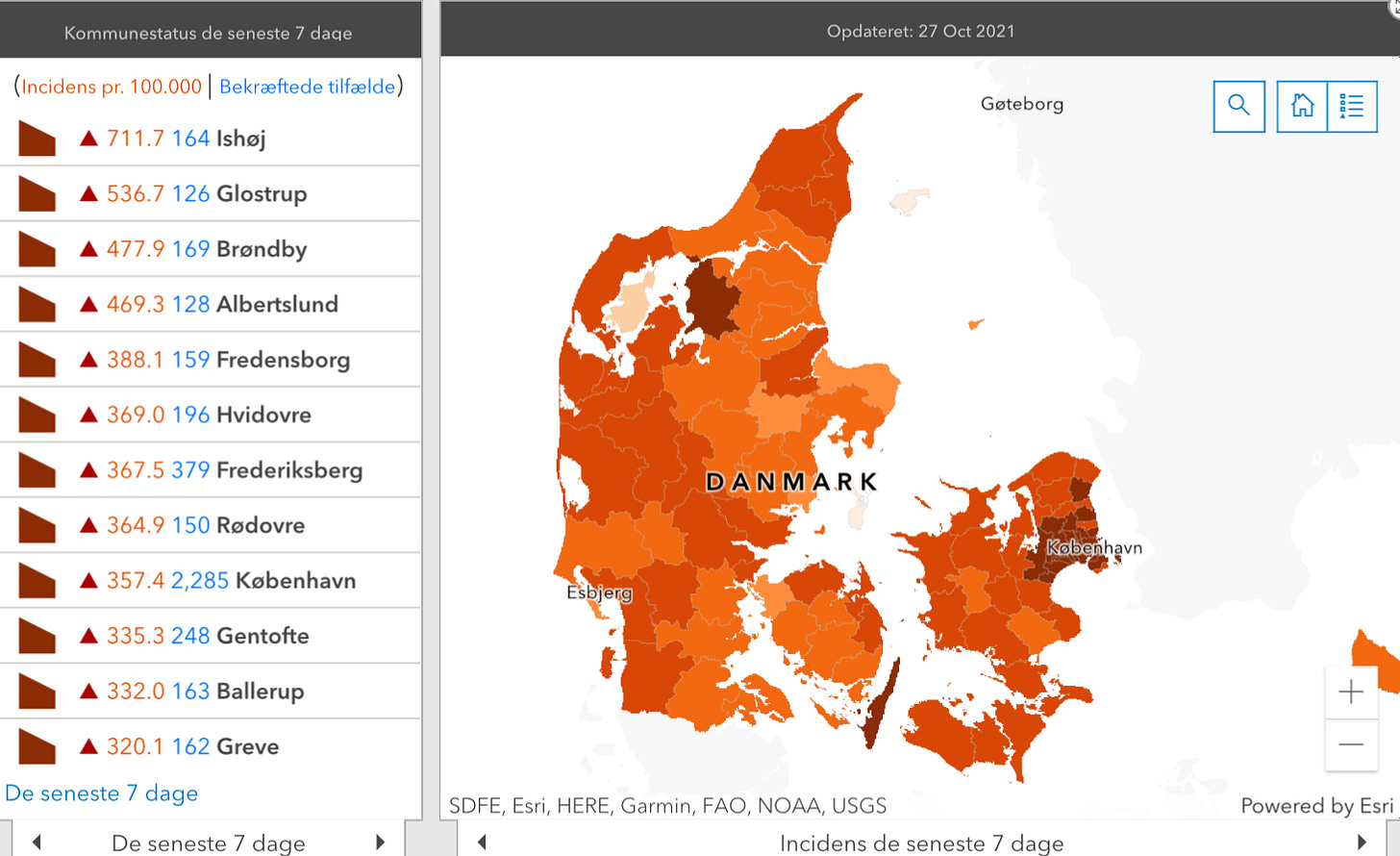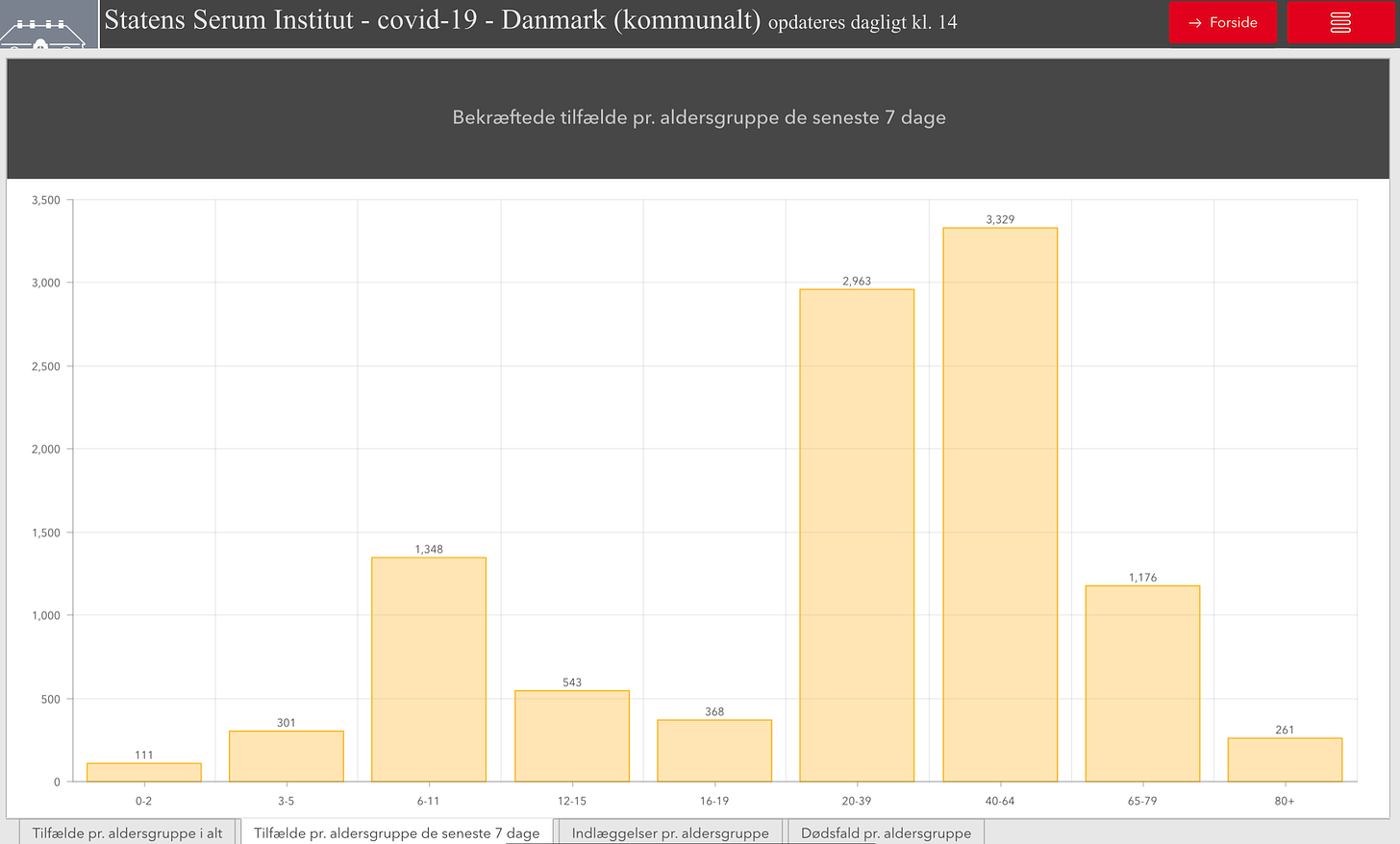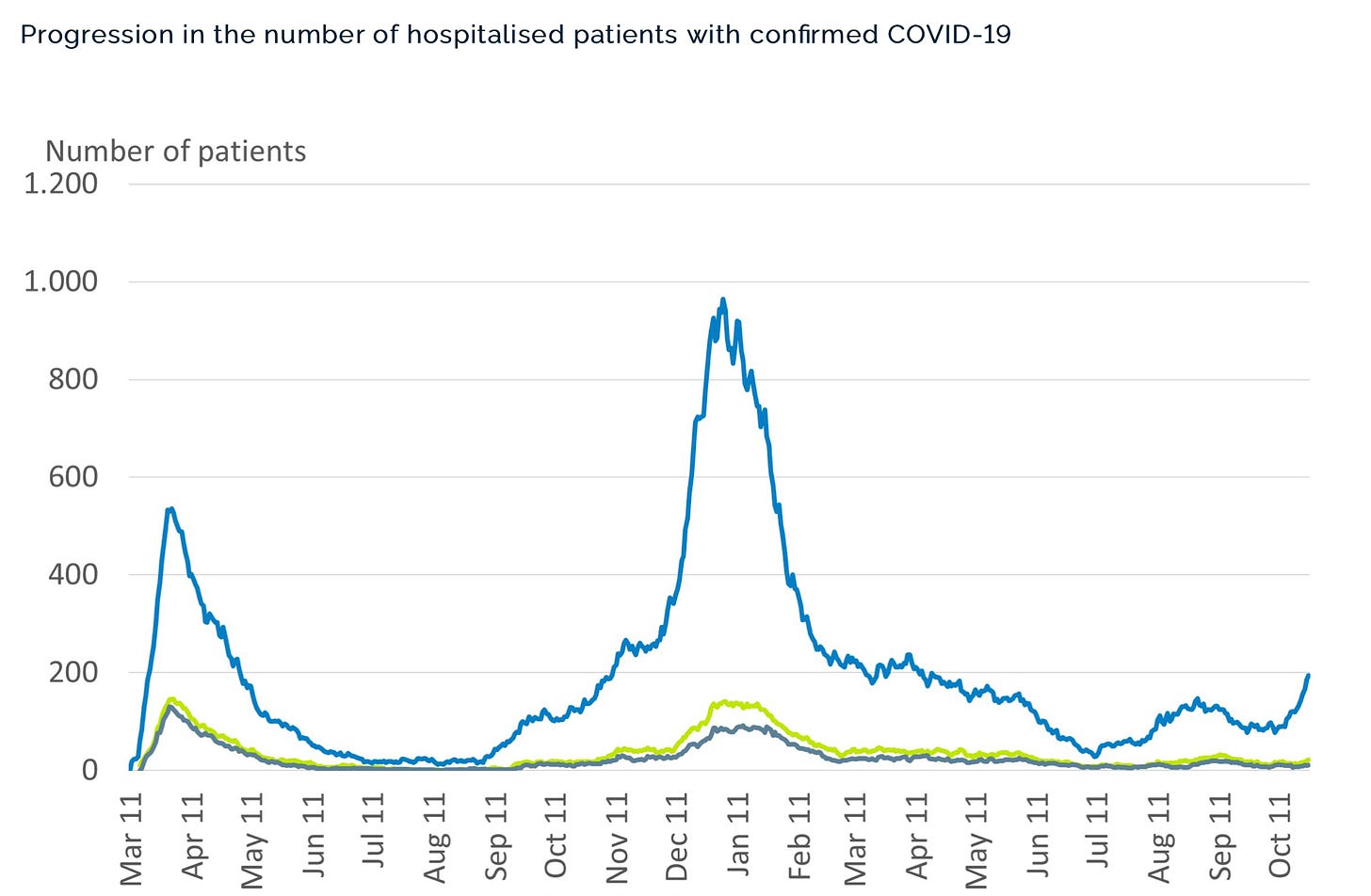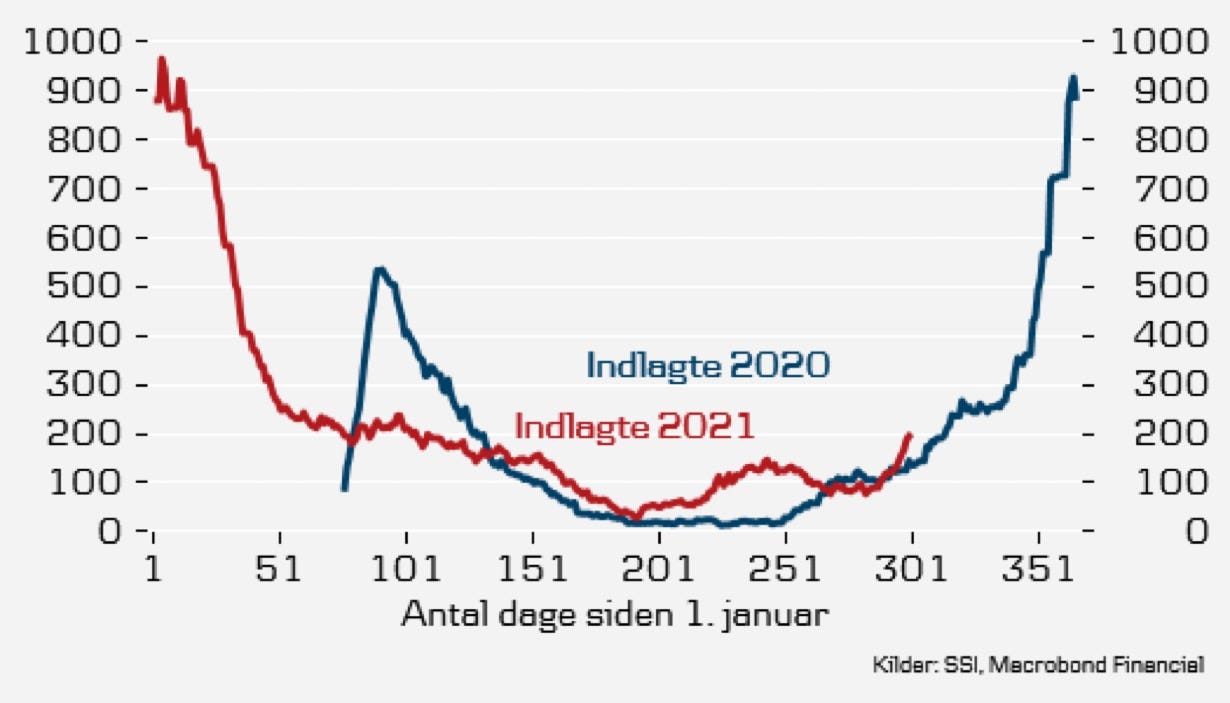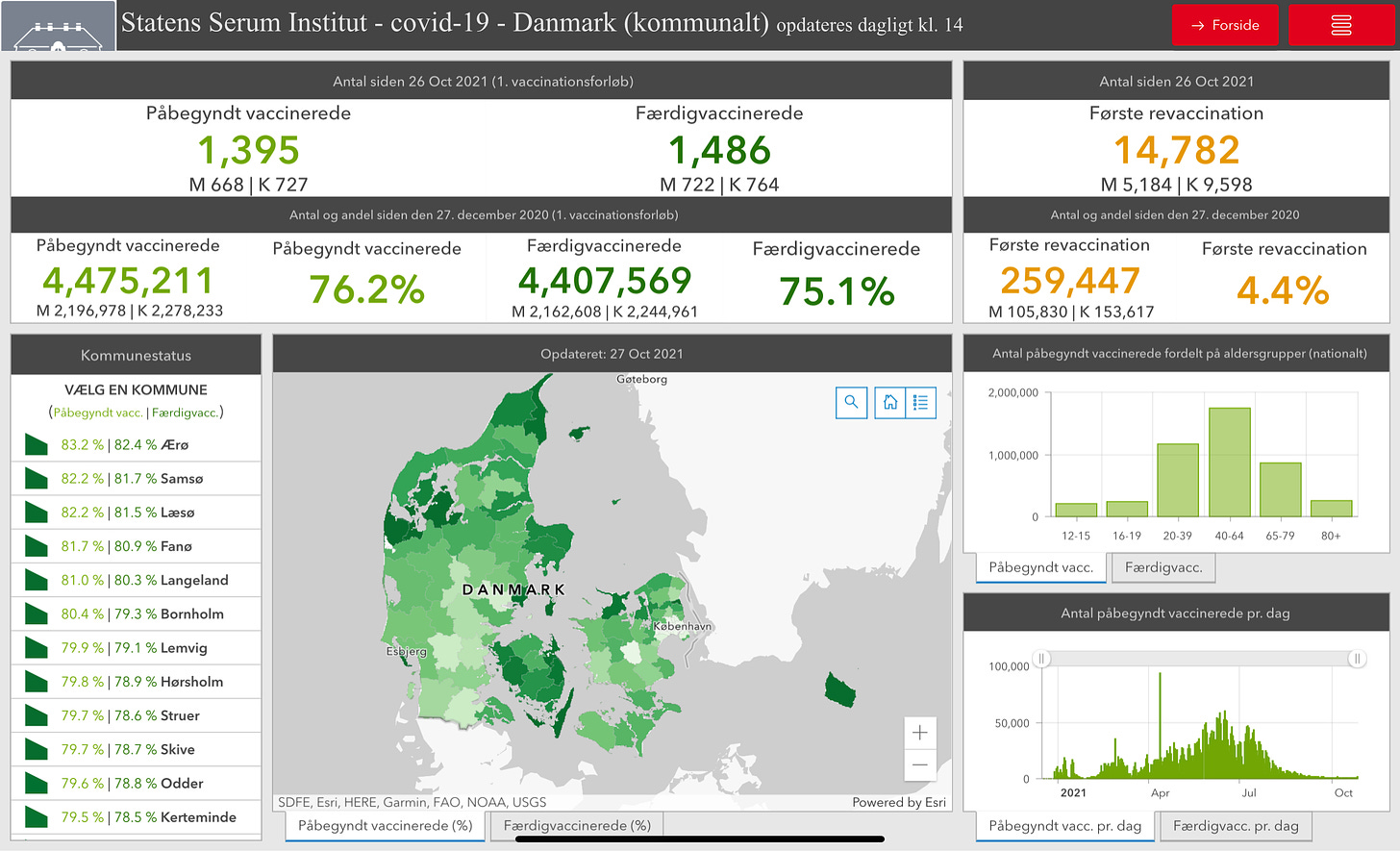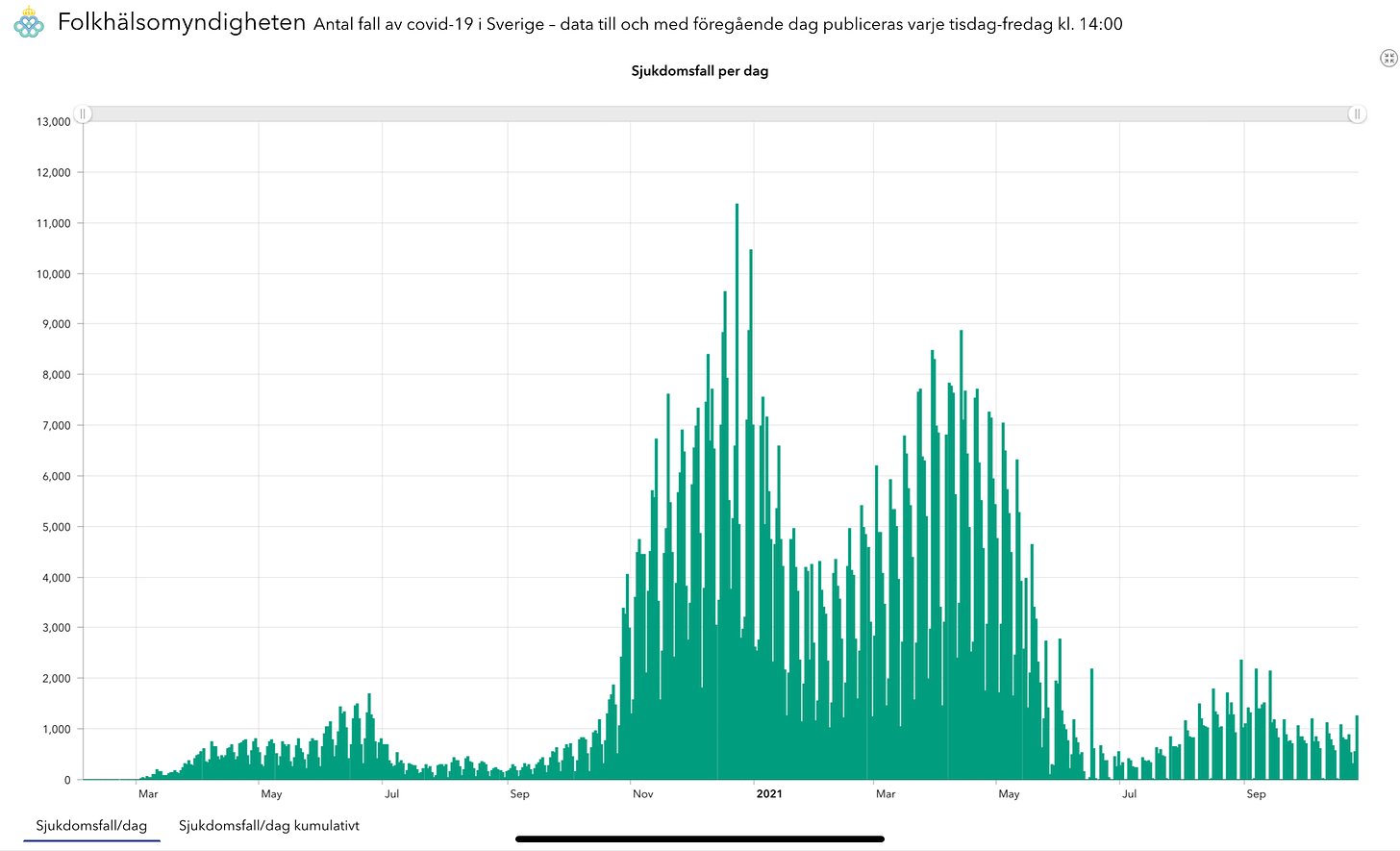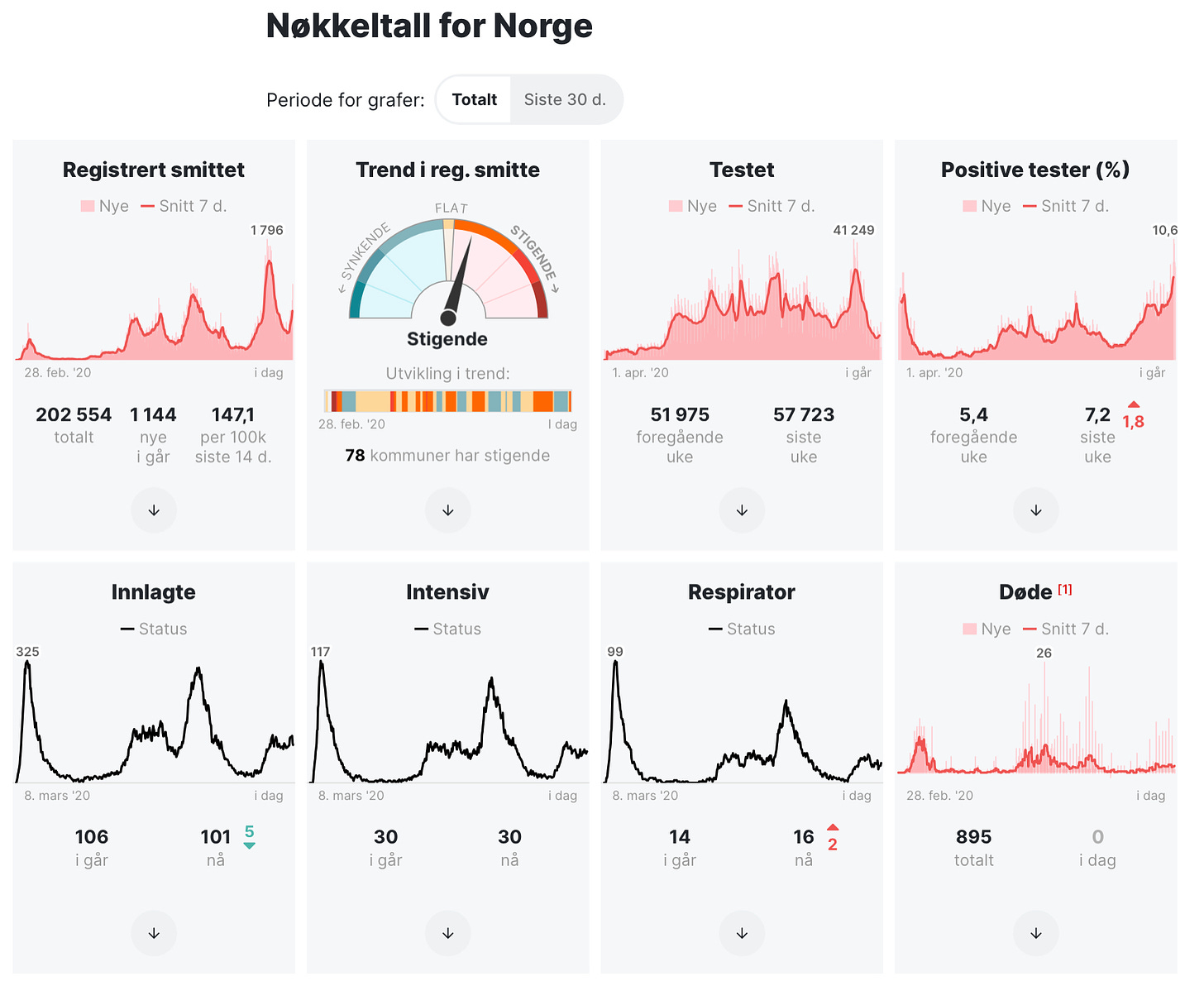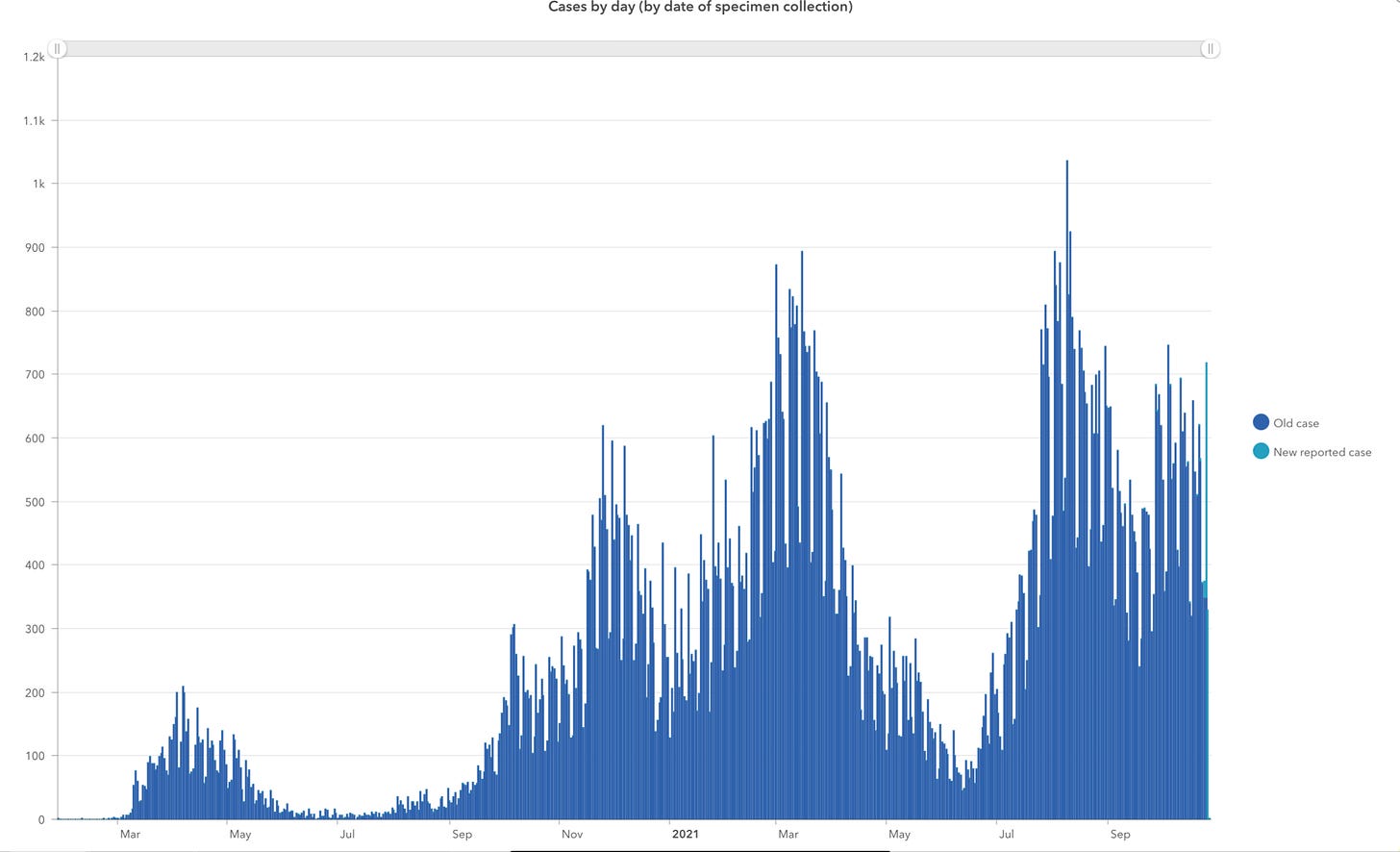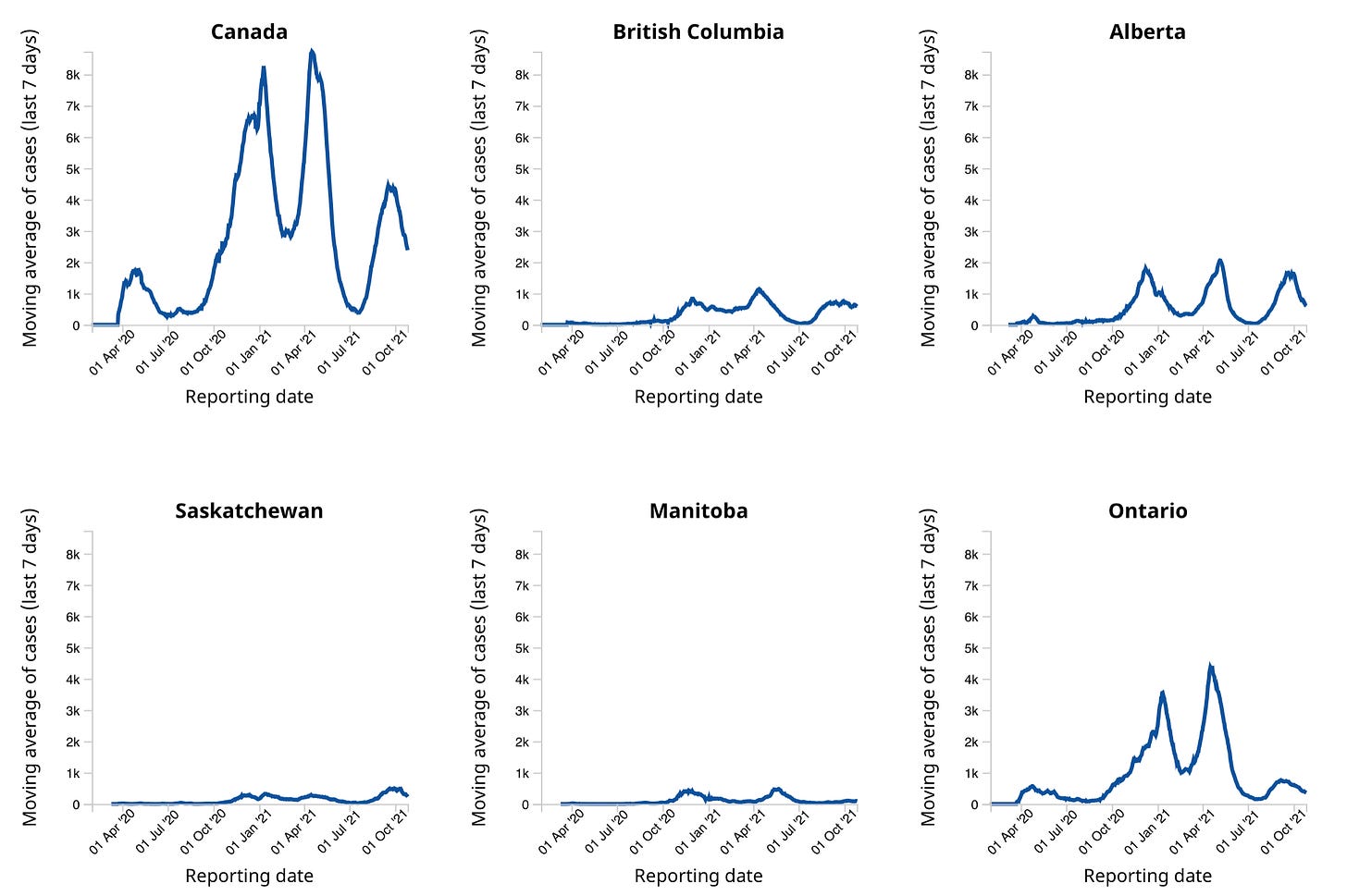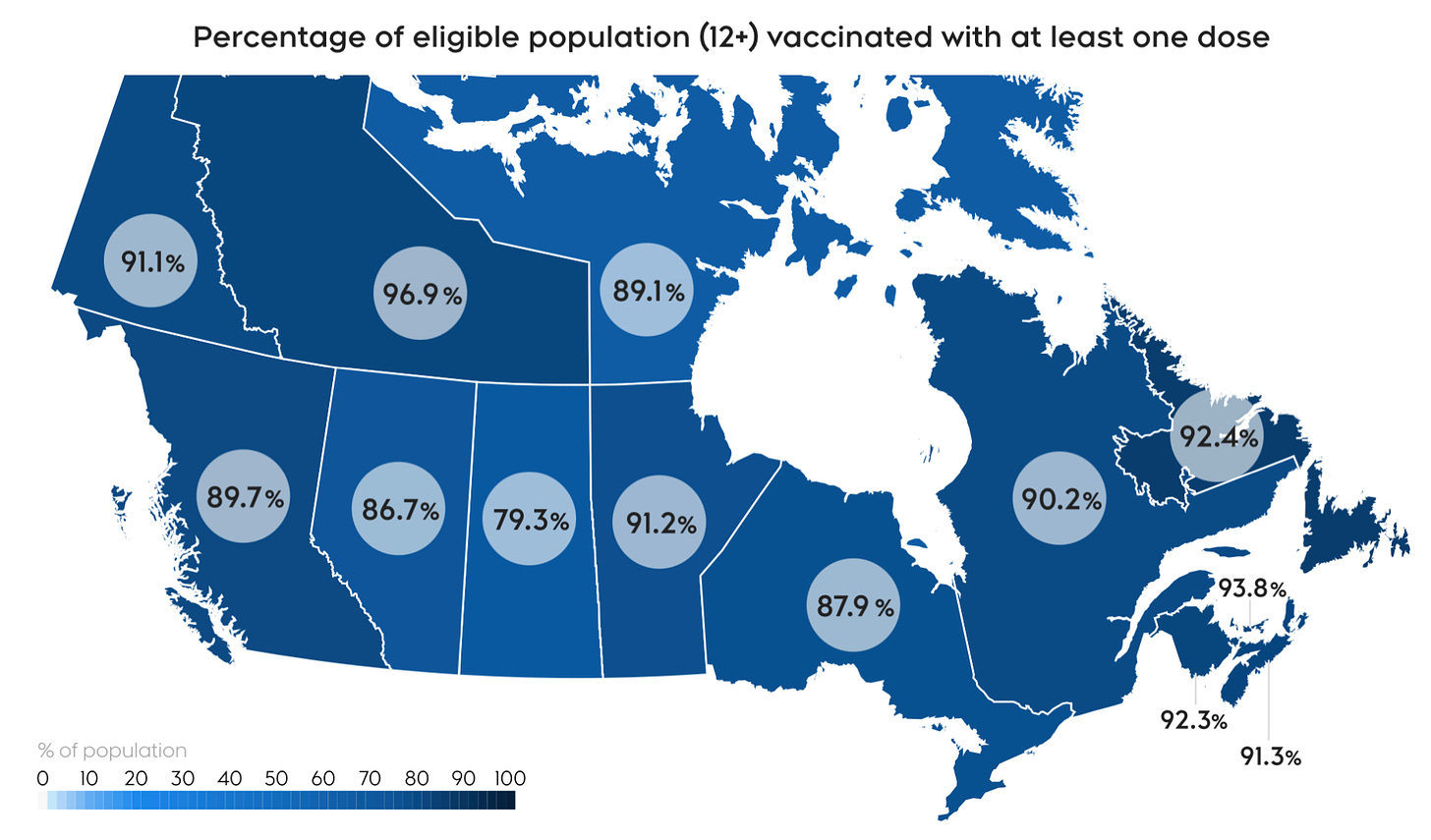🇩🇰
Health Minister Magnus Heunicke is warning of a “harsh winter” ahead. He has told TV2 that he has called the parliamentary parties for “thorough briefing” on the COVID situation set for this Friday. Heunicke says he is not ruling out reintroducing restrictions but has played down the idea of another national lockdown.
“Now there has been this increase of one week to an extent that has surprised most, and therefore we are following the situation very closely. It may well be that there will be a need for restrictions.”
Heunicke says 13% of Danes who are eligible to get vaccinated but have so far not done so are ruining it for everyone else. He says one particular area of concern is West Copenhagen, where vaccination rates are lagging.
“If Denmark is to stay open, completely open, then come in and get vaccinated.”
That said, he also ruled out restrictions aimed directly at those who are not vaccinated.
-
Denmark’s expert group for mathematical modeling has tabled another update saying it is expecting infection and hospitalization numbers to rise.
The latest forecast looks ahead until at least mid-November, with the group anticipating “significant increases” in COVID activity and hospital admissions. It estimates that by mid-November Denmark will see between 600 to 3,200 daily infections and between 25 to 110 new hospital admissions each day. The panel is still leaning towards a scenario where the numbers are more on the lower end of the spectrum.
Panel Chair Dr. Camilla Holten Møller:
“We still expect to see an increase in daily infection rates and new admissions in the next six weeks. But it is also still uncertain how big the increase will be.”
There are several major variables making efforts to accurately forecast pandemic behavior a little tricky. Chief among them is a testing regime that is vastly scaled down from what it once was. The other big one is how people behave. Will they be cautious and limit social contacts, or not? Another variable is efterårs ferie. The impact of travel and social contacts during the holiday week have yet to make themselves known.
The expert group is also anticipating that most new COVID infections will be among younger and unvaccinated populations. But it is also expecting “a significant number” of breakthrough infections among vaccinated 12 to 59 year olds.
Data shows that new hospital admissions for newborns to those 59 years old are largely made up of unvaccinated people. However, for those 60 years old and older, most hospitalizations are among those who are fully vaccinated.
Because the COVID situation in Denmark is so volatile right now, the expert group will table updated forecasts every two to three weeks.
-
Denmark is reporting 1,871 COVID infections and five more coronavirus deaths today. That is the highest number of daily infections since January 6.
There were 120,673 total corona tests yesterday of which 94,240 were PCR tests equaling a positivity percentage of 1.98%.
It is worth noting that the number of daily coronavirus tests has increased, indicating a probable mix of ramped-up capacity and likely some increased interest in getting tested due to concern over the current situation.
-
The number of Danish kommunes with a COVID incidence rate of 100 or more per 100,000 residents has now risen to 66. Most concerning is that the numbers are trending upward in a majority of municipalities around the country.
Ishøj Kommune continues to be the hardest hit with an incidence rate now of 711.
Today, in a Facebook post, Ishøj Kommune said infections “are spreading rapidly” as it encouraged all residents to get tested, even those who are vaccinated.
“We can also see that the infection is greatest in citizens who have not been vaccinated. That is why we also urge that we all get vaccinated.”
PCR tests are offered in the Kommune in “in the former chiropractor’s room next to Kulturium.” The municipality also added “we are currently unable to offer quick tests, so if you want a quick test, the nearest place is the test center in Tåstrup.”
-
Over the last seven days a concerning trend has continued, with the number of COVID infections among 6 to 11 year olds continuing to increase. Numbers are also edging up for 12 to 19 year olds as well. However, the bulk of new infections continue to be concentrated among those 20 to 64 years old.
The increase in infections among young children has thankfully so far not translated to any related surge in hospitalizations, with just 11 kids under the age of 19 being hospitalized in the last seven days.
-
COVID hospitalizations continue to rise (+5) and have hit 200 admissions for the first time since early April. The number of infected people in an ICU (23) has inched upward (+1) and of those the number on a ventilator (12) also climbed slightly (+1).
Danske Bank Chief Analyst Mikael Olai Milhøj has published an interesting graph comparing COVID admissions last year to what we have seen so far this year. It provides some good context.
-
On the vaccination front whether it is rising infection numbers or yesterday’s warning from Health Minister Magnus Heunicke that if more people don’t get vaccinated then lockdowns could return but daily inoculations increased. Yesterday both1st and 2nd doses administered were above 1,000 for the first time in weeks.
76.2% of the population has one vaccine dose and 75.1% have both doses.
🇸🇪
Sweden has added 1,259 infections and another 14 corona deaths since yesterday’s update.
To date, 7,243,394 1st vaccine doses (84.8% of the population 16 years old and older) and 6,873,913 2nd doses (80.5%) have been administered.
The Swedish Public Health Agency has not updated vaccination numbers for the 12 to 15 year old age group or for booster doses.
-
The Swedish Public Health Agency is broadening its COVID vaccine booster shot campaign to include more groups. The agency is now offering a 3rd dose to everyone 65 years old and older as well as all seniors home, nursing home, and home-care staff.
State Epidemiologist Anders Tegnell:
“Sweden vaccinated the most fragile people first and it is important that they always have good protection. We have already recommended a refill dose for the oldest group. Given the increasing age's link to increased risk, and that it has been awhile since many in the group 65-79 years, and SÄBO, home health care and home care staff were vaccinated, it is now time to recommend that those groups also get a replenishment dose.”
The health agency is also recommending that, where possible, a booster shot and an influenza vaccine can be coordinated together.
Up until now, Sweden has offered booster shots to seniors 80 years old and older and all seniors 65 years old and older who are in care.
A booster dose of either the Pfizer/BioNTech vaccine can come six months after a second vaccine dose regardless of what the initial vaccine was.
-
Region Stockholm is already taking bookings for a third booster dose. The region says anyone among the priority groups being offered a booster shot who had their second dose six months ago can schedule a third dose.
“It is a long-awaited message to people who were among the first to be offered a vaccine against COVID. For those who book in the app Always Open, it is possible to get an appointment very quickly. The offer of dose three is already in the app for everyone of the right age and where 6 months has passed since the second dose. We have plenty of vaccines now, unlike last spring, when many older people had to wait to be vaccinated.”
The region is offering four ways to get a booster shot. You can book by telephone, or on the app, vaccination clinics have drop in times, and people can also get the jab at one of 12 mobile clinics that move around the region.
🇳🇴
Norway has added 631 infections and had no new virus deaths in the last day.
COVID hospitalizations (101) are down (-5) while the number of infected people in an ICU (30) is unchanged and of those the number on a ventilator (16) is up (+2).
To date, 77.90% of Norwegians 12 years old and older have had one vaccine dose and 69.11% have had both.
-
Infections increased substantially in Norway last week, according to the latest weekly assessment from the Norwegian Institute of Public Health. 4,357 cases were reported last week, which is a 54% increase from the week before. The COVID incidence rate last week was four times higher among people 16 years old and older who were unvaccinated.
For a second week in a row hospital admissions rose in Norway. There were 75 new COVID patients admitted last week compared to 61 the week prior and 56 the week before that. The NIPH says they know the vaccination status of 66 of the patients admitted last week. Of those, 38% (25) were unvaccinated and 56% (37) were fully vaccinated. The median age of those being hospitalized with breakthrough infections is 77, with a majority of them being in high risk populations. The health agency stresses that at this point “the hospitals capacity is not threatened.”
The NIPH says there is uncertainty ahead due to colder weather, more people indoors, no more restrictions, and possibly waning immunity for some all combine to increase concerns. It is urging people to stay home if they are sick, keep up good hygiene habits, and keep social interactions to a minimum.
“Municipalities and hospitals must be prepared for a continued increase in COVID infections and a simultaneous increase in other respiratory infections.”
🇫🇮
Finland has registered 739 new infections today and had no new coronavirus deaths.
The pandemic situation in the country continues to be problematic.
COVID hospitalizations (206) are down (-9).
On the vaccination front so far, 4,210,465 1st doses (75.1% of the total population) and 3,801,743 2nd vaccine doses (68%) have been administered.
-
Citing sources, Finnish news agency STT says while new restrictions likely will not be on the table, the Finnish government may instead extend existing prohibitions. This comes as the country struggles with concerning infection numbers and a strained healthcare system. STT says that government parties have agreed that COVID restrictions on restaurants and bars should be extended. They are due to expire this weekend. What that will look like, however, is still being hammered out.
Last week the Finnish Institute for Public Health warned the infection risks were “significant” at venues serving alcohol late into the night, especially for people who are not vaccinated.
🦠🌏 💊
The pharmaceutical company Merck has done something no COVID vaccine maker has managed yet. The company announced today that it will share the formulation for its antiviral pill, molnupiravir, with a United Nations-backed non-profit. The deal will allow the drug to be manufactured and sold cheaply in some of the world’s poorest nations where COVID vaccine supplies are in very short supply. The licensing deal announced today with Medicines Patent Pool is royalty-free. The pill has shown promise as a coronavirus treatment in clinical trials. Earlier this month, Merck reported that the drug cut the rate of COVID hospitalizations and deaths in half among high-risk patients.
The deal is especially surprising as countries like the United States have rushed to get deals signed to buy large quantities of the drug. The company had stood to make a lot of money even while wealthier nations would have hoarded supplies leaving poorer nations out in the cold. Very much like what has happened with global vaccine supplies.
🇺🇸💉
The United States has moved one step closer to vaccinating children five to 11 years old. A US Food and Drug Administration panel unanimously voted to support authorizing the use of the Pfizer/BioNTech vaccine for young children. It said the benefits vastly outweigh any potential risks. The FDA still has to render its decision on whether to vaccinate five to 11 year olds, which it is expected to do within days.
Pfizer has also applied to the European Medicines Agency for use of its vaccine on young children in Europe. The EMA is reviewing the application.
🇺🇸 ✈️
The United States is moving to a system where most incoming travelers will be admitted, or not, based on their vaccination status. As of November 8, the US will open its borders to all fully vaccinated travelers. They must have a negative COVID test no more than 72 hours old and share contact tracing information to board a flight into the United States. Young people under the age of 18 are exempt.
American citizens who are not vaccinated will need a negative COVID test no more than 24 hours old to return from trips abroad. Unvaccinated foreign travelers will be generally barred from traveling to the US entirely. There is one exception. Countries deemed to have insufficient supply and administration of vaccines. There are about 50 countries on this list. Travelers from those countries who are not traveling to the US as tourists can enter with a negative COVID test no more than 24 hours old.
The other major change coming next months is that the US has changed its definition of those considered fully vaccinated to include anyone with two doses of a vaccine approved by the FDA or on the WHO’s emergency authorization list.
🇨🇦
Canada reported 1,773 new COVID infections while losing another 35 lives to the coronavirus yesterday.
To date, the vaccination effort has administered 29,670,481 1st doses (77.60% of the total population) while 28,083,203 people (73.45%) are fully vaccinated.
In Ontario today there were 321 new infections, of which 203 were among people not fully vaccinated or not vaccinated at all. There are 215 people in hospital and of those, 188 are either not vaccinated or have a single dose. Of the 134 people in an ICU, that number is 118.
Quebec reported 478 infections and four more deaths today.
In Atlantic Canada, New Brunswick has 21 new infections. Nova Scotia recorded seven infections and one death. Newfoundland and Labrador had 20 new cases.
Manitoba saw 130 new infections and three more deaths today.
There were 126 infections and another 10 deaths in Saskatchewan today.
Alberta logged 442 infections and 12 deaths yesterday. The province is reporting active alerts or outbreaks in 242 schools. There are 836 people in hospital and and 183 in an ICU. 87% of infections cases in intensive care are unvaccinated.
B.C. registered 457 infections and another two deaths yesterday. The province announced it will begin offering booster shots to everyone by May of next year.




